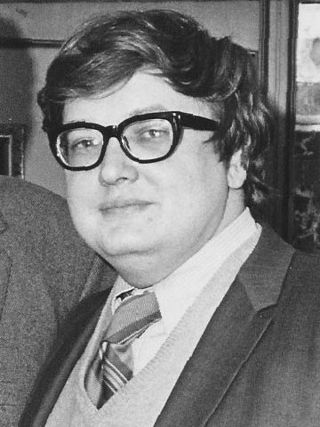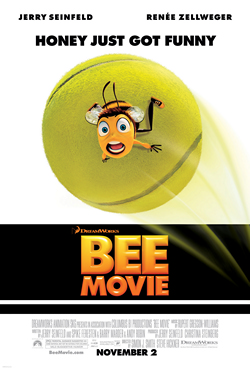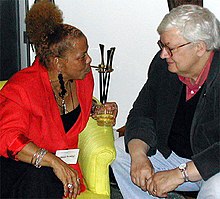In the field of artificial intelligence, the most difficult problems are informally known as AI-complete or AI-hard, implying that the difficulty of these computational problems, assuming intelligence is computational, is equivalent to that of solving the central artificial intelligence problem—making computers as intelligent as people, or strong AI. To call a problem AI-complete reflects an attitude that it would not be solved by a simple specific algorithm.
The Chinese room argument holds that a digital computer executing a program cannot have a "mind", "understanding", or "consciousness", regardless of how intelligently or human-like the program may make the computer behave. The argument was presented by philosopher John Searle in his paper "Minds, Brains, and Programs", published in Behavioral and Brain Sciences in 1980. Similar arguments were presented by Gottfried Leibniz (1714), Anatoly Dneprov (1961), Lawrence Davis (1974) and Ned Block (1978). Searle's version has been widely discussed in the years since. The centerpiece of Searle's argument is a thought experiment known as the Chinese room.
Speech synthesis is the artificial production of human speech. A computer system used for this purpose is called a speech synthesizer, and can be implemented in software or hardware products. A text-to-speech (TTS) system converts normal language text into speech; other systems render symbolic linguistic representations like phonetic transcriptions into speech. The reverse process is speech recognition.

Roger Joseph Ebert was an American film critic, film historian, journalist, essayist, screenwriter, and author. He was a film critic for the Chicago Sun-Times from 1967 until his death in 2013.

Stand-up comedy is a comedic performance to a live audience in which the performer addresses the audience from the stage. The performer is known as a comedian, comic, or stand-up. It is usually a rhetorical performance, but many comics employ crowd interaction as part of their routine.
A CAPTCHA is a type of challenge–response test used in computing to determine whether the user is human in order to deter bot attacks and spam.

Dabbala Rajagopal "Raj" Reddy is an Indian-born American computer scientist and a winner of the Turing Award. He is one of the early pioneers of artificial intelligence and has served on the faculty of Stanford and Carnegie Mellon for over 50 years. He was the founding director of the Robotics Institute at Carnegie Mellon University. He was instrumental in helping to create Rajiv Gandhi University of Knowledge Technologies in India, to cater to the educational needs of the low-income, gifted, rural youth. He is the chairman of International Institute of Information Technology, Hyderabad. He is the first person of Asian origin to receive the Turing Award, in 1994, known as the Nobel Prize of Computer Science, for his work in the field of artificial intelligence.
"Computing Machinery and Intelligence" is a seminal paper written by Alan Turing on the topic of artificial intelligence. The paper, published in 1950 in Mind, was the first to introduce his concept of what is now known as the Turing test to the general public.
Comic timing or comedic timing emerges from a performer's joke delivery: they interact with an audience—intonation, rhythm, cadence, tempo, and pausing—to guide the audience's laughter, which then guides the comedic narrative. The pacing of the delivery of a joke can have a strong impact on its comedic effect, even altering its meaning; the same can also be true of more physical comedy such as slapstick. Comic timing is also crucial for comedic video editing to maximize the impact of a joke, for example, through a smash cut.

Gilbert Jeremy Gottfried was an American stand-up comedian and actor, best known for his exaggerated shrill voice, strong New York accent, and his edgy, often controversial, sense of humor. His numerous roles in film and television include voicing Iago in the Aladdin animated franchise, Mr. Mxyzptlk in Superman: The Animated Series and Justice League Action, Digit LeBoid in Cyberchase, Kraang and Subprime in Teenage Mutant Ninja Turtles. He also played Mr. Peabody in the Problem Child film series.

Robby Garner is an American natural language programmer and software developer. He won the 1998 and 1999 Loebner Prize contests with the program called Albert One. He is listed in the 2001 Guinness Book of World Records as having written the "most human" computer program.

Bee Movie is a 2007 American animated comedy film produced by DreamWorks Animation and Columbus 81 Productions, and distributed by Paramount Pictures. Directed by Simon J. Smith and Steve Hickner from a screenplay by the writing team of Jerry Seinfeld, Spike Feresten, Barry Marder and Andy Robin, it stars the voices of Seinfeld, Renée Zellweger, Matthew Broderick, John Goodman, Patrick Warburton, and Chris Rock. The film centers on Barry B. Benson (Seinfeld), a honey bee who tries to sue the human race for exploiting bees after learning from his new florist friend Vanessa Bloome (Zellweger) that humans sell and consume honey.
The philosophy of artificial intelligence is a branch of the philosophy of mind and the philosophy of computer science that explores artificial intelligence and its implications for knowledge and understanding of intelligence, ethics, consciousness, epistemology, and free will. Furthermore, the technology is concerned with the creation of artificial animals or artificial people so the discipline is of considerable interest to philosophers. These factors contributed to the emergence of the philosophy of artificial intelligence.
The Conference on World Affairs (CWA) is an annual conference, open to the public, featuring panel discussions among experts in international affairs and other areas, hosted since 1948 by the University of Colorado Boulder in Boulder, Colorado, US.
A voice font is a computer-generated voice that can be controlled by specifying parameters such as speed and pitch and made to pronounce text input. The concept is akin to that of a text font or a MIDI instrument in the sense that the same input may easily be represented in several different ways based on the design of each font. In spite of current shortcomings in the underlying technology for voice fonts, screen readers and other devices used to enhance accessibility of text to persons with disabilities, can benefit from having more than one default voice font. This happens in the same way that users of a traditional computer word processor benefit from having more than one text font.
Computational humor is a branch of computational linguistics and artificial intelligence which uses computers in humor research. It is a relatively new area, with the first dedicated conference organized in 1996.

The Turing test, originally called the imitation game by Alan Turing in 1950, is a test of a machine's ability to exhibit intelligent behaviour equivalent to, or indistinguishable from, that of a human. Turing proposed that a human evaluator would judge natural language conversations between a human and a machine designed to generate human-like responses. The evaluator would be aware that one of the two partners in conversation was a machine, and all participants would be separated from one another. The conversation would be limited to a text-only channel, such as a computer keyboard and screen, so the result would not depend on the machine's ability to render words as speech. If the evaluator could not reliably tell the machine from the human, the machine would be said to have passed the test. The test results would not depend on the machine's ability to give correct answers to questions, only on how closely its answers resembled those a human would give. Since the Turing test is a test of indistinguishability in performance capacity, the verbal version generalizes naturally to all of human performance capacity, verbal as well as nonverbal (robotic).

Richard Davies deBronkart Jr, widely known as e-Patient Dave, is a cancer patient and blogger who, in 2009, became a noted activist for healthcare transformation through participatory medicine and personal health data rights.

CereProc is a speech synthesis company based in Edinburgh, Scotland, founded in 2005. The company specialises in creating natural and expressive-sounding text to speech voices, synthesis voices with regional accents, and in voice cloning.
This glossary of artificial intelligence is a list of definitions of terms and concepts relevant to the study of artificial intelligence, its sub-disciplines, and related fields. Related glossaries include Glossary of computer science, Glossary of robotics, and Glossary of machine vision.









